The name "Wabash" is an English spelling of the French name for the river, "Ouabache." French traders named the river after the Miami Indian word for the river, waapaahšiiki, meaning "it shines white", "pure white", or "water over white stones". The Miami name reflected the clarity of the river in Huntington County, Indiana where the river bottom is limestone.

The Wabash was first mapped by French explorers to the Mississippi, including the sections now known as the Ohio River. Although the Wabash is today considered a tributary of the Ohio, the Ohio was considered a tributary of the Wabash until the mid-18th century. This is because the French traders traveled north and south from Canada to the Gulf of Mexico via the Wabash; it served as a vital trade route for North American-French trade.

The United States has fought five battles on or near the river; the Battle of Vincennes (1779),The Illinois campaign was a series of events in the American Revolutionary War (1775–1783) in which a small force ofVirginia militiamen led by George Rogers Clark seized  control of several British posts in the Illinois country, in what is now the Midwestern United States. The campaign is the best-known action of the western theater of the war and the source of Clark's reputation as an early American military hero.
control of several British posts in the Illinois country, in what is now the Midwestern United States. The campaign is the best-known action of the western theater of the war and the source of Clark's reputation as an early American military hero.
 control of several British posts in the Illinois country, in what is now the Midwestern United States. The campaign is the best-known action of the western theater of the war and the source of Clark's reputation as an early American military hero.
control of several British posts in the Illinois country, in what is now the Midwestern United States. The campaign is the best-known action of the western theater of the war and the source of Clark's reputation as an early American military hero.
In July 1778, Clark and his men crossed the Ohio River from Kentucky and took control of Kaskaskia, Vincennes, and several other villages in British territory.
from Kentucky and took control of Kaskaskia, Vincennes, and several other villages in British territory.  The occupation was accomplished without firing a shot because most of the French-speaking and American Indian inhabitants were unwilling to take up arms on behalf of the British Empire.
The occupation was accomplished without firing a shot because most of the French-speaking and American Indian inhabitants were unwilling to take up arms on behalf of the British Empire. To counter Clark's advance, Henry Hamilton
To counter Clark's advance, Henry Hamilton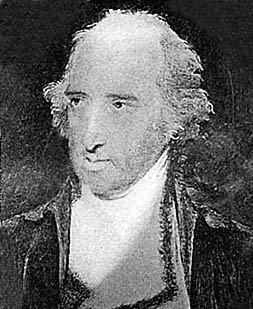 , the British lieutenant governor at Fort Detroit,
, the British lieutenant governor at Fort Detroit,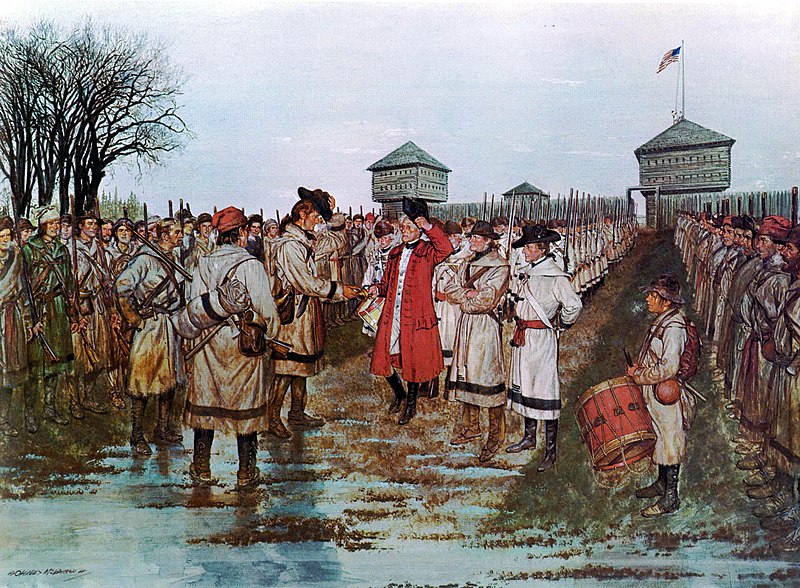 reoccupied Vincennes with a small force. In February 1779, Clark returned to Vincennes in a surprise winter expedition and retook the town, capturing Hamilton in the process. Virginia capitalized on Clark's success by establishing the region as Illinois County, Virginia.
reoccupied Vincennes with a small force. In February 1779, Clark returned to Vincennes in a surprise winter expedition and retook the town, capturing Hamilton in the process. Virginia capitalized on Clark's success by establishing the region as Illinois County, Virginia.
The importance of the Illinois campaign has been the subject of much debate. Because the British ceded the entireNorthwest Territory to the United States in the 1783 Treaty of Paris, some historians have credited Clark with nearly doubling the size of the original Thirteen Colonies by seizing control of the Illinois country during the war. For this reason, Clark was nicknamed "Conqueror of the Northwest", and his Illinois campaign—particularly the surprise march to Vincennes from Kentucky and took control of Kaskaskia, Vincennes, and several other villages in British territory.
from Kentucky and took control of Kaskaskia, Vincennes, and several other villages in British territory.  The occupation was accomplished without firing a shot because most of the French-speaking and American Indian inhabitants were unwilling to take up arms on behalf of the British Empire.
The occupation was accomplished without firing a shot because most of the French-speaking and American Indian inhabitants were unwilling to take up arms on behalf of the British Empire. To counter Clark's advance, Henry Hamilton
To counter Clark's advance, Henry Hamilton , the British lieutenant governor at Fort Detroit,
, the British lieutenant governor at Fort Detroit, reoccupied Vincennes with a small force. In February 1779, Clark returned to Vincennes in a surprise winter expedition and retook the town, capturing Hamilton in the process. Virginia capitalized on Clark's success by establishing the region as Illinois County, Virginia.
reoccupied Vincennes with a small force. In February 1779, Clark returned to Vincennes in a surprise winter expedition and retook the town, capturing Hamilton in the process. Virginia capitalized on Clark's success by establishing the region as Illinois County, Virginia.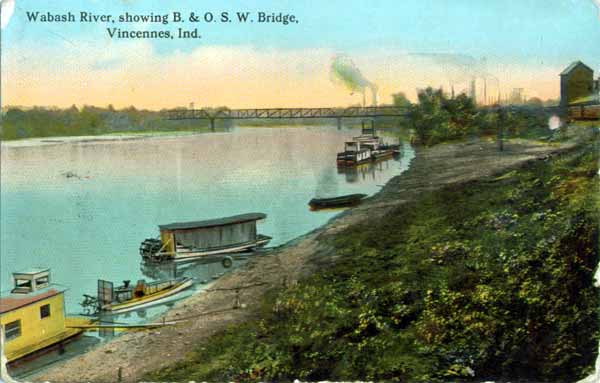 —was greatly celebrated and romanticized. Other historians have downplayed the importance of the campaign, arguing that Clark's "conquest" was a temporary occupation that had no impact on the boundary negotiations in Europe
—was greatly celebrated and romanticized. Other historians have downplayed the importance of the campaign, arguing that Clark's "conquest" was a temporary occupation that had no impact on the boundary negotiations in Europe St. Clair's Defeat (1791),St. Clair's Defeat also known as the Battle of the Wabash, the Battle of Wabash River or the Battle of a Thousand Slain, was fought on November 4, 1791 in the Northwest Territory between the United States and the Western Confederacy of American Indians, as part of the Northwest Indian War. It was a major American Indian victory and remains the greatest defeat of the United States Army by American Indians.
The American Indians were led by Little Turtle of the Miamis, Blue Jacket of the Shawnees and Buckongahelas of the Delawares (Lenape). The war party numbered more than one thousand warriors, including a large number of Potawatomis from eastern Michigan and the Saint Joseph. The opposing force of about 1,000 Americans was led by General Arthur St. Clair, who had proved to be an able commander during the American Revolutionary War. The American Indian confederacy was overwhelmingly victorious. In proportional terms of losses to strength, it was the worst defeat that United States forces have ever suffered in battle—of the 1,000 officers and men that St. Clair led into battle, only 48 escaped unharmed. As a result, President George Washington forced St. Clair to resign his post and Congress initiated its first investigation of the executive branch.
Blue Jacket of the Shawnees and Buckongahelas of the Delawares (Lenape). The war party numbered more than one thousand warriors, including a large number of Potawatomis from eastern Michigan and the Saint Joseph. The opposing force of about 1,000 Americans was led by General Arthur St. Clair, who had proved to be an able commander during the American Revolutionary War. The American Indian confederacy was overwhelmingly victorious. In proportional terms of losses to strength, it was the worst defeat that United States forces have ever suffered in battle—of the 1,000 officers and men that St. Clair led into battle, only 48 escaped unharmed. As a result, President George Washington forced St. Clair to resign his post and Congress initiated its first investigation of the executive branch. the Attack on Fort Recovery (1794),Fort Recovery was a United States Army fort begun in late 1793 and completed in March 1794 under orders by General "Mad" Anthony Wayne. It was located on the site of the present-day village of Fort Recovery, Ohio, United States, on the Wabash River within two miles of the boundary with Indiana.
the Attack on Fort Recovery (1794),Fort Recovery was a United States Army fort begun in late 1793 and completed in March 1794 under orders by General "Mad" Anthony Wayne. It was located on the site of the present-day village of Fort Recovery, Ohio, United States, on the Wabash River within two miles of the boundary with Indiana.
 Blue Jacket of the Shawnees and Buckongahelas of the Delawares (Lenape). The war party numbered more than one thousand warriors, including a large number of Potawatomis from eastern Michigan and the Saint Joseph. The opposing force of about 1,000 Americans was led by General Arthur St. Clair, who had proved to be an able commander during the American Revolutionary War. The American Indian confederacy was overwhelmingly victorious. In proportional terms of losses to strength, it was the worst defeat that United States forces have ever suffered in battle—of the 1,000 officers and men that St. Clair led into battle, only 48 escaped unharmed. As a result, President George Washington forced St. Clair to resign his post and Congress initiated its first investigation of the executive branch.
Blue Jacket of the Shawnees and Buckongahelas of the Delawares (Lenape). The war party numbered more than one thousand warriors, including a large number of Potawatomis from eastern Michigan and the Saint Joseph. The opposing force of about 1,000 Americans was led by General Arthur St. Clair, who had proved to be an able commander during the American Revolutionary War. The American Indian confederacy was overwhelmingly victorious. In proportional terms of losses to strength, it was the worst defeat that United States forces have ever suffered in battle—of the 1,000 officers and men that St. Clair led into battle, only 48 escaped unharmed. As a result, President George Washington forced St. Clair to resign his post and Congress initiated its first investigation of the executive branch. the Attack on Fort Recovery (1794),Fort Recovery was a United States Army fort begun in late 1793 and completed in March 1794 under orders by General "Mad" Anthony Wayne. It was located on the site of the present-day village of Fort Recovery, Ohio, United States, on the Wabash River within two miles of the boundary with Indiana.
the Attack on Fort Recovery (1794),Fort Recovery was a United States Army fort begun in late 1793 and completed in March 1794 under orders by General "Mad" Anthony Wayne. It was located on the site of the present-day village of Fort Recovery, Ohio, United States, on the Wabash River within two miles of the boundary with Indiana.
Wayne purposely chose as the location for his new fort the spot where Arthur St. Clair had been defeated in 1791 by a Native American confederacy under Miami Chief Michikinikwa (Little Turtle) and Shawnee Chief Weyapiersenwah (Blue Jacket). That battle, called St. Clair's Defeat, ended St Clair's military career and prompted the United States Congress to undertake a full investigation of the loss. Wayne hoped to demonstrate that the United States Army could recover from this crushing defeat and emerge victorious in what is now termed the Northwest Indian War or "Little Turtle's War." the Battle of Tippecanoe (1811) ,he Battle of Tippecanoe was fought on November 7, 1811, between United States forces led by Governor William Henry Harrison of the Indiana Territory and forces of Tecumseh's growing American Indian confederation led by his younger brotherTenskwatawa.
,he Battle of Tippecanoe was fought on November 7, 1811, between United States forces led by Governor William Henry Harrison of the Indiana Territory and forces of Tecumseh's growing American Indian confederation led by his younger brotherTenskwatawa.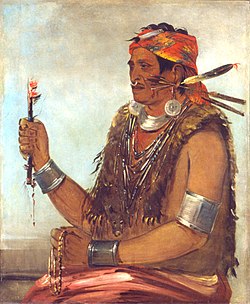 In response to rising tensions with the tribes and threats of war, a United States force of militia and regulars set out to launch a preemptive strike on the headquarters of the confederacy. While camping at the confluence of the Tippecanoeand Wabash Rivers, outside Prophetstown, awaiting a meeting with tribal leaders, Harrison's army was attacked in the early morning hours by
In response to rising tensions with the tribes and threats of war, a United States force of militia and regulars set out to launch a preemptive strike on the headquarters of the confederacy. While camping at the confluence of the Tippecanoeand Wabash Rivers, outside Prophetstown, awaiting a meeting with tribal leaders, Harrison's army was attacked in the early morning hours by 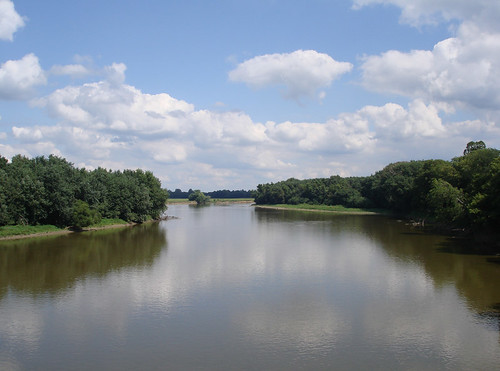 forces from the town. Although the tribal forces took the army by surprise, their assault was ultimately repulsed as the attackers' ammunition ran low. and the Siege of Fort Harrison (1812)The Siege of Fort Harrison was an engagement that lasted from 4 September–15 September 1812.
forces from the town. Although the tribal forces took the army by surprise, their assault was ultimately repulsed as the attackers' ammunition ran low. and the Siege of Fort Harrison (1812)The Siege of Fort Harrison was an engagement that lasted from 4 September–15 September 1812.  The first American land victory during the War of 1812, it was won by an outnumbered United States force garrisoned inside the fort against a combinedNative American force near modern Terre Haute, Indiana.
The first American land victory during the War of 1812, it was won by an outnumbered United States force garrisoned inside the fort against a combinedNative American force near modern Terre Haute, Indiana. .The Illinois country was a vaguely defined region which included much of the present U.S. states of Indiana and Illinois. The area had been a part of the Louisiana district of New France until the end of the French and Indian War/Seven Years' War, when France ceded sovereignty of the region to the British in 1763 Treaty of Paris. In the Quebec Act of 1774, the British made the Illinois country a part of the newly expanded Province of Quebec.
.The Illinois country was a vaguely defined region which included much of the present U.S. states of Indiana and Illinois. The area had been a part of the Louisiana district of New France until the end of the French and Indian War/Seven Years' War, when France ceded sovereignty of the region to the British in 1763 Treaty of Paris. In the Quebec Act of 1774, the British made the Illinois country a part of the newly expanded Province of Quebec.
 ,he Battle of Tippecanoe was fought on November 7, 1811, between United States forces led by Governor William Henry Harrison of the Indiana Territory and forces of Tecumseh's growing American Indian confederation led by his younger brotherTenskwatawa.
,he Battle of Tippecanoe was fought on November 7, 1811, between United States forces led by Governor William Henry Harrison of the Indiana Territory and forces of Tecumseh's growing American Indian confederation led by his younger brotherTenskwatawa. In response to rising tensions with the tribes and threats of war, a United States force of militia and regulars set out to launch a preemptive strike on the headquarters of the confederacy. While camping at the confluence of the Tippecanoeand Wabash Rivers, outside Prophetstown, awaiting a meeting with tribal leaders, Harrison's army was attacked in the early morning hours by
In response to rising tensions with the tribes and threats of war, a United States force of militia and regulars set out to launch a preemptive strike on the headquarters of the confederacy. While camping at the confluence of the Tippecanoeand Wabash Rivers, outside Prophetstown, awaiting a meeting with tribal leaders, Harrison's army was attacked in the early morning hours by  forces from the town. Although the tribal forces took the army by surprise, their assault was ultimately repulsed as the attackers' ammunition ran low. and the Siege of Fort Harrison (1812)The Siege of Fort Harrison was an engagement that lasted from 4 September–15 September 1812.
forces from the town. Although the tribal forces took the army by surprise, their assault was ultimately repulsed as the attackers' ammunition ran low. and the Siege of Fort Harrison (1812)The Siege of Fort Harrison was an engagement that lasted from 4 September–15 September 1812.  The first American land victory during the War of 1812, it was won by an outnumbered United States force garrisoned inside the fort against a combinedNative American force near modern Terre Haute, Indiana.
The first American land victory during the War of 1812, it was won by an outnumbered United States force garrisoned inside the fort against a combinedNative American force near modern Terre Haute, Indiana. .The Illinois country was a vaguely defined region which included much of the present U.S. states of Indiana and Illinois. The area had been a part of the Louisiana district of New France until the end of the French and Indian War/Seven Years' War, when France ceded sovereignty of the region to the British in 1763 Treaty of Paris. In the Quebec Act of 1774, the British made the Illinois country a part of the newly expanded Province of Quebec.
.The Illinois country was a vaguely defined region which included much of the present U.S. states of Indiana and Illinois. The area had been a part of the Louisiana district of New France until the end of the French and Indian War/Seven Years' War, when France ceded sovereignty of the region to the British in 1763 Treaty of Paris. In the Quebec Act of 1774, the British made the Illinois country a part of the newly expanded Province of Quebec.
In 1778, the population of the Illinois country consisted of about 1,000 people of European descent, mostly French-speaking, and about 600 African-American slaves.Thousands of American Indians lived in villages concentrated along the Mississippi, Illinois, and Wabash Rivers. The British military presence was sparse: most of the troops had been withdrawn in 1776 to cut back on expenses. Philippe-François de Rastel de Rocheblave, a French-born soldier and official, was hired by the British to be the local commandant. Stationed at Kaskaskia, Rocheblave reported to Hamilton at Detroit, and frequently complained that he lacked the money, resources, and troops needed to administer the region.
When the American Revolutionary War began in 1775, the Ohio River marked the border between the Illinois country and Kentucky, an area recently settled by American colonists. The British had originally sought to keep American Indians out of the war, but in 1777 Lieutenant Governor Hamilton received instructions to recruit and arm Indian war parties to raid the Kentucky settlements, opening a western front in the war with the rebel colonists. "From 1777 on," wrote historian Bernard Sheehan, "the line of western settlements was under almost constant assault by white-led [Indian] raiding parties that had originated at Detroit."[3]
In 1777, George Rogers Clark was a 24 year-old major in the Kentucky County, Virginia, militia. Clark believed that he could end the raids on Kentucky by capturing the British posts in the Illinois country and then moving against Detroit. In April 1777, Clark sent two spies into the Illinois country.They returned after two months and reported that the fort at Kaskaskia was unguarded, that the French-speaking residents were not greatly attached to the British, and that no one expected an attack from Kentucky. Clark wrote a letter to Governor Patrick Henry of Virginia in which he outlined a plan to capture Kaskaski Different conflicts have been referred to as the "Battle of the Wabash". A 329-acre (133 ha) remnant of the old-growth forests that once bordered the Wabash can be found at Beall Woods State Park , near Mount Carmel, Illinois. In the 19th century, the Wabash and Erie Canal, one of the longest canals in the world, was built along the entire length of the river. Portions are still accessible in modern times, but most of the abandoned canal no longer exists.
, near Mount Carmel, Illinois. In the 19th century, the Wabash and Erie Canal, one of the longest canals in the world, was built along the entire length of the river. Portions are still accessible in modern times, but most of the abandoned canal no longer exists.
The Wabash River between Terre Haute and the Ohio River was navigable by large ships 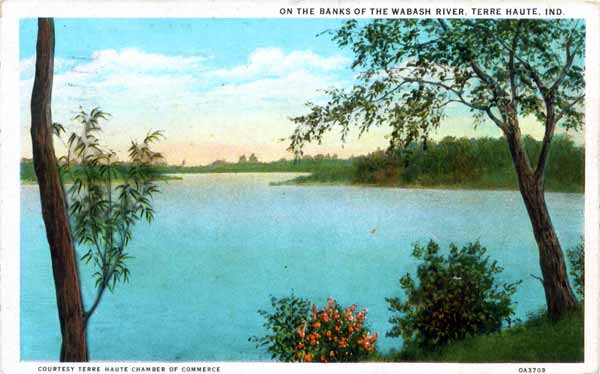 during the nineteenth century, and was a regular stop for steam ships.
during the nineteenth century, and was a regular stop for steam ships. _1.JPG) Erosion due to farming and runoff rendered it impassible to such ships during the late nineteenth century. Dredging could have resolved the problem,
Erosion due to farming and runoff rendered it impassible to such ships during the late nineteenth century. Dredging could have resolved the problem, but the availability of railroad transportation did not require such intervention. There are several swing bridges over the river on the two-hundred mile stretch, but none remain in operation.
but the availability of railroad transportation did not require such intervention. There are several swing bridges over the river on the two-hundred mile stretch, but none remain in operation.
 during the nineteenth century, and was a regular stop for steam ships.
during the nineteenth century, and was a regular stop for steam ships.  but the availability of railroad transportation did not require such intervention. There are several swing bridges over the river on the two-hundred mile stretch, but none remain in operation.
but the availability of railroad transportation did not require such intervention. There are several swing bridges over the river on the two-hundred mile stretch, but none remain in operation.
The river has shifted course several times in the stretch along the Indiana and Illinois border creating cutoffs where parts of the river are entirely in either Indiana or Illinois. However, both states still generally regard the middle of the river as the state border.

In the 1920s there existed a famous hotel and resort that existed in Wabash County nearby the Grand Rapids Dam on the Wabash River. The hotel was named the Grand Rapids Hotel and was owned by Frederick Hinde Zimmerman.
The Grand Rapids Hotel was a hotel that existed outside of Mount Carmel, Illinois
 in Wabash County, Illinois, United States in Southern Illinois in the 1920s during a timeperiod
in Wabash County, Illinois, United States in Southern Illinois in the 1920s during a timeperiod that is commonly referred to as the Roaring Twenties, the Jazz Age, and the Golden Twenties.
that is commonly referred to as the Roaring Twenties, the Jazz Age, and the Golden Twenties.  The hotel was located on the Wabash River next to the Grand Rapids Dam. The land the hotel was built on was formerly part of a PiankeshawIndian summer campground. Frederick Hinde Zimmerman, was the nephew of Captain Charles T. Hinde, built the hotel and it is rumored that it was based on the Hotel del Coronado in San Diego.
The hotel was located on the Wabash River next to the Grand Rapids Dam. The land the hotel was built on was formerly part of a PiankeshawIndian summer campground. Frederick Hinde Zimmerman, was the nephew of Captain Charles T. Hinde, built the hotel and it is rumored that it was based on the Hotel del Coronado in San Diego. Captain Hinde was a wealthy man who was an investor in the Hotel del Coronado. The Grand Rapids Hotel was the first major hotel in the region and had a nine hole golf course and a baseball diamond on the grounds. During the hotel's operation it was managed by Mr. O.L.
Captain Hinde was a wealthy man who was an investor in the Hotel del Coronado. The Grand Rapids Hotel was the first major hotel in the region and had a nine hole golf course and a baseball diamond on the grounds. During the hotel's operation it was managed by Mr. O.L. 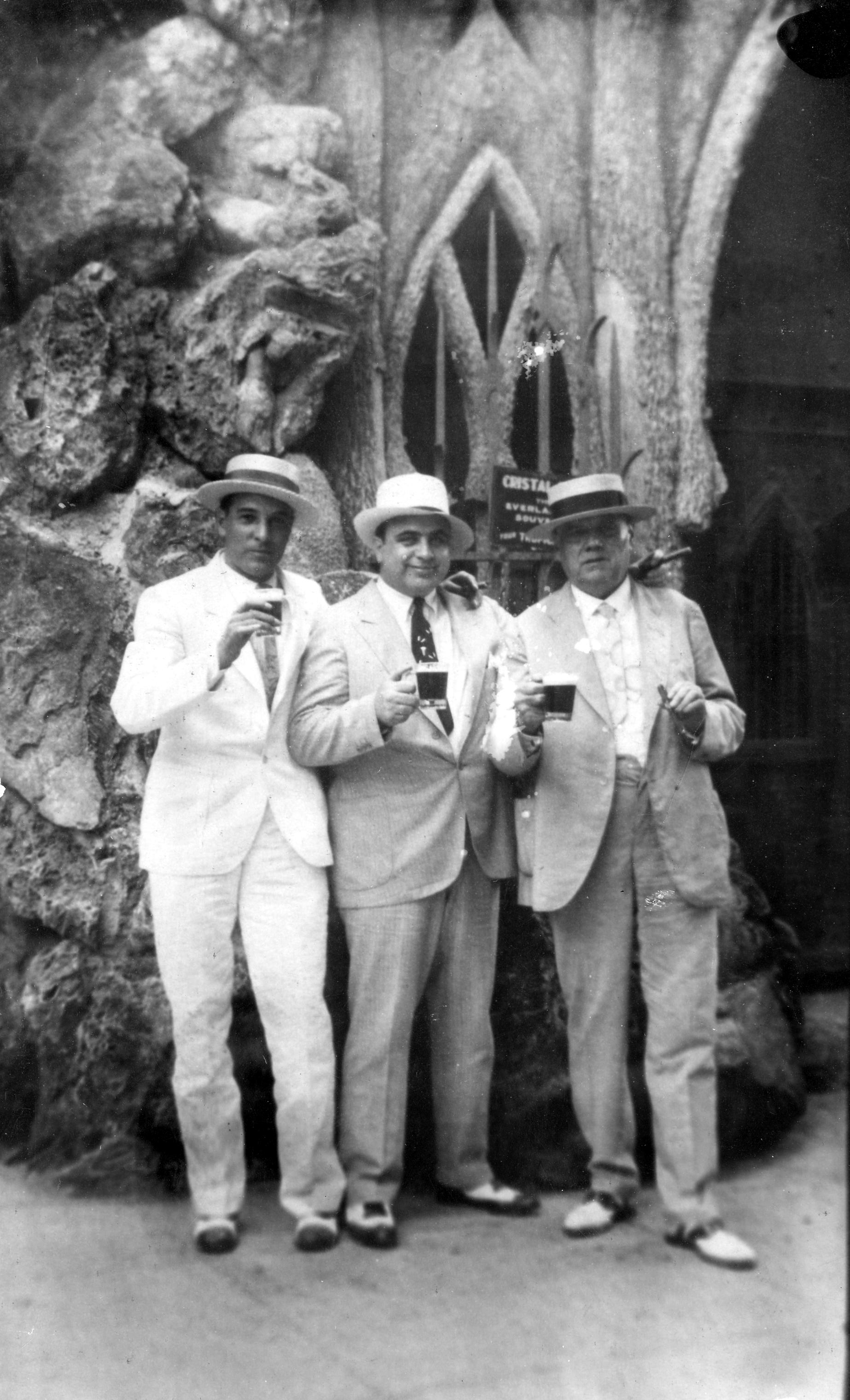 Rapson and Mr. Glenn Goodart. Manager Rapson managed the hotel from from 1922 until 1924, and Manager Goodart managed the hotel from 1924-1929. Many of the leading social organizations of the time had meetings or other social events at the hotel's restaurant and grounds. In 1929 the hotel burned under mysterious circumstances due to a blowtorch incident involving Manager Goodart. Some people claim that gangsters referred to as the Chicago Outfit associated with Al Capone would take the train from Chicago and stay at the hotel. It is not known if the men were smuggling liquor in violation of Prohibition or merely vacationing During the hotel's nine year existence it catered to individuals from all over the United States. In July of 2011, John Matthew Nolan wrote a detailed history of the Grand Rapids Hotel.
Rapson and Mr. Glenn Goodart. Manager Rapson managed the hotel from from 1922 until 1924, and Manager Goodart managed the hotel from 1924-1929. Many of the leading social organizations of the time had meetings or other social events at the hotel's restaurant and grounds. In 1929 the hotel burned under mysterious circumstances due to a blowtorch incident involving Manager Goodart. Some people claim that gangsters referred to as the Chicago Outfit associated with Al Capone would take the train from Chicago and stay at the hotel. It is not known if the men were smuggling liquor in violation of Prohibition or merely vacationing During the hotel's nine year existence it catered to individuals from all over the United States. In July of 2011, John Matthew Nolan wrote a detailed history of the Grand Rapids Hotel.
No comments:
Post a Comment